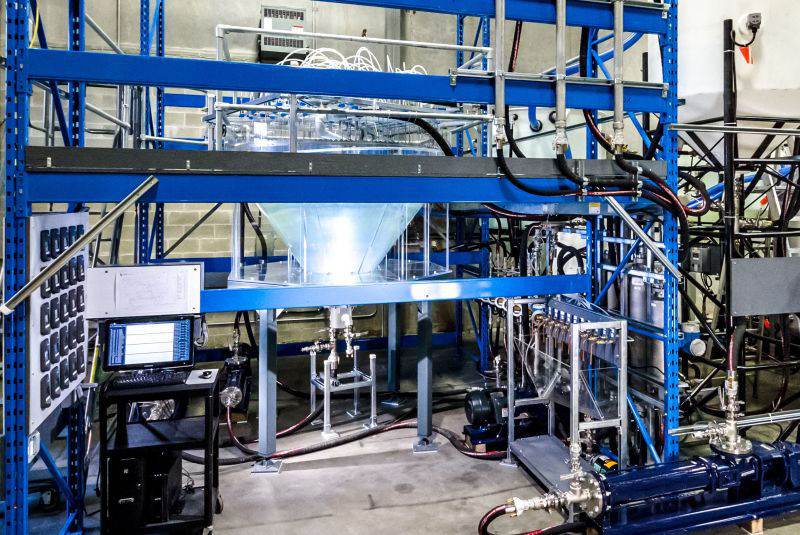Extracting Value
The process of recovering and concentrating important raw materials from the surrounding rock, sand and clay that is accessible to surface mining involves numerous technical challenges bridging almost the complete spectrum of science and engineering.
Because the minerals of interest are present in very small concentrations, the amount of ore that must be processed commercially is daunting. As a result, seemingly small increases in performance and efficiency can have a dramatic impact on process economics. The breadth of issues that must be dealt with in this industry is wide, and includes:
- Limitations in transport phenomena, restricting the rates associated with many chemical reactions exploited in the mining flowsheet
- Challenging solid/liquid separations, often complicated by complex operating conditions and chemistry
- Challenges associated with the design, operation and characterization of fluidized bed technology that forms the basis for many process units
- Diverse water treatment issues, often involving the application of aerobic and anaerobic biological systems
- Geotechnical challenges associated with mine site reclamation, in which the rejected ore components are re-introduced into the natural setting
- Erosion and material wear associated with the processing of dry and slurried solids
Our knowledge and expertise in multi-phase and non-Newtonian flows, physical and computational modelling, and geotechnical engineering, allow Coanda to tackle complex challenges leading to effective, lasting solutions.
Want to know more about our mining services?
Download our brochure:
COANDA MINING OVERVIEW
Improving Performance
With over two decades of experience, and a team of over 60 scientists, engineers and technical staff, Coanda delivers tangible results in many technical areas of concern including:
Material Wear: We have studied wear related problems and developed appropriate remedial plans to reduce or eliminate wear. Computational fluid dynamics (CFD) can be used to simulate slurry flows in both simple and complex geometries, allowing high wear areas to be accurately identified. Laboratory simulations using wear sensitive surface tracers can provide insights into wear rates.
Slurry Stream Management: We have extensive experience in the design and operation of many different slurry handling systems, as well as the ability to account for complex non-Newtonian behaviours such as yield strength, shear sensitivity and thixotropy.
Gravity Separation: We have worked with many different gravity separation technologies, designs and applications, from vertical and horizontal separators to inclined plate and cyclone separators. We can help design and evaluate components such as feed distributors as well as perform optimization of complete vessel geometries and operating conditions.
Flotation: Coanda has performed analytical and experimental studies to improve the effectiveness of flotation columns. The influence of feed distributors, vessel geometry, bubble-size distribution and gas hold-up on separation efficiency, has been assessed for a number of commercial processes.
Thickeners: Coanda has supported a variety of projects involving thickener technology-from mathematical modelling of thickener units to laboratory programs to determine optimal throughput rates and thickener sizing. We have worked with different material types and have extensive experience with the design and optimization of various thickener components or aspects of the process (e.g. flocculant mixing in the feed well).
Cyclones/Hydro-Cyclones: These can be effective tools in mining operations for the removal of fine particles suspended in either a continuous gas phase media (cyclones) or a continuous liquid phase media (hydro-cyclones). We have used computational and physical modelling techniques to optimize various conventional and unconventional designs.
Particle Size Reduction: Coanda has studied tumblers, autogenous mills, semi-autogenous mills, and ball mills using physical laboratory modelling and computational simulations. Our focus has included feed system design, outlet design, residence time optimization, capacity and size optimization, efficiency of the milling process, wear minimization, power / torque requirements and scale-up.
Screens: Coanda has worked with both rotary and flat screening systems (with or without vibration) using physical modelling and computational simulations. Improvements include optimal screen sizing for a given flow rate, design of internals to adjust residence times and minimize carry-over, and screen feed designs to minimize and evenly distribute wear.

Mixing Boxes: The design of mixing boxes for ore slurrification requires effective mixing between the dry ore and water, plus aggressive solid-solid impact to induce lump breakup and ablation. Gravity is used as the primary source of energy input in most mixing boxes, and the ore and added water are repeatedly impacted as they cascade through the internal mixing elements. Using laboratory simulations techniques Coanda has developed proprietary designs which dramatically increase the mixing effectiveness, reducing the overall mix box height and size.
Bins, Apron Feeders and Conveyors: Many mining operations depend on bins, hoppers, apron feeders and conveyors, to manage and transport raw ore. Coanda has performed many experimental and computational studies to characterize the behaviour of ore materials in conventional bins and hoppers, and on apron feeders and conveyors.
Fluidized Beds: Coanda has a broad range of experience with fluidized beds, spanning all Geldart particle types, at conditions from minimum fluidization to fast fluidized and pneumatic transport. We have applied scaled laboratory models and mathematical models, including CFD to a variety of geometries, from conventional beds and toroidal designs, to circulating beds.
Tailings Flocculation and Deposition: Coanda has extensive experience in the areas of tailing management related to flocculation, coagulation and deposition. We have performed many laboratory and pilot scales studies related to optimizating dewatering and long term geotechnical consolidation using passive inline mixing systems and tank dynamic mixers. Sub-aerial and sub-aqueous depositions strategies have been studied and optimized leading to the development of predictive models of thin-lift deposition slurry flow as well as new optical measurement technologies to monitor thin-lift flow in laboratory flumes as well as in large scale commercial applications.
Coanda has contributed in a broad spectrum of the issues facing the mining industry. Through a combination of scaled laboratory modeling, analytical and computational analyses, laboratory testing, and the support of field testing initiatives.
NEXT STEPS
Need help with your mining project and want to talk to someone?
get in touch with our mining experts
Want to know more about our mining services?
Download our brochure:
COANDA MINING OVERVIEW


